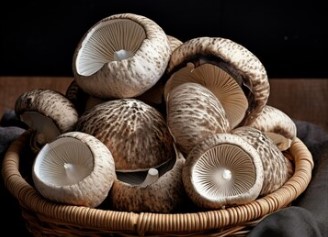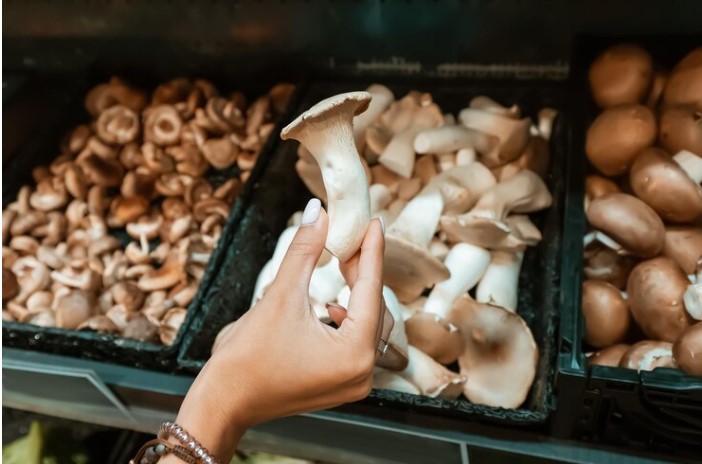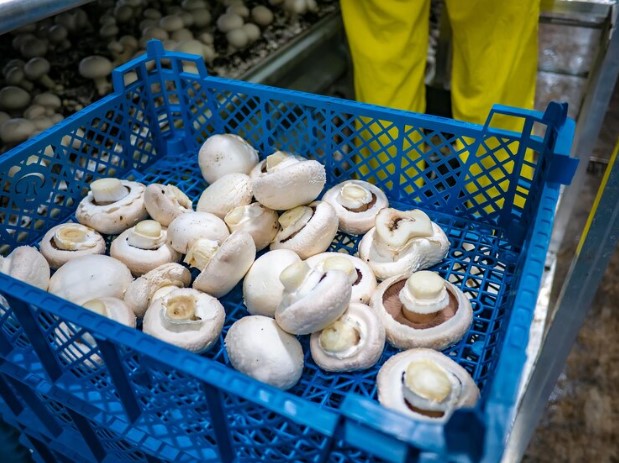The mushroom demand in Kenya is 1200 tonnes, which is way above the production capacity of 700 tonnes. Hence, establishing successful mushroom farming in Kenya can earn you massive profits.
Mushroom farming in Kenya is a lucrative business for small- and large-scale farmers. However, you have to implement best practices if you want to experience maximum profitability.
The best thing about mushroom farming is that you can sell it locally and internationally, depending on your production capacity.
Some popular mushrooms in Kenya include Oyster, Button (White), and Chinese.
In this guide, you will learn the following:
- The benefits of mushroom farming in Kenya
- Challenges of mushroom farming
- Requirements for starting mushroom farming in Kenya
- Tips for mushroom farming

Let’s take an inside look!
Why Invest in Mushroom Farming in Kenya?

With so many produce in the market, why focus on mushroom farming?
High Demand
The production capacity for mushrooms in Kenya is 700 tonnes, while the demand is 1200 tonnes. Therefore there is a deficit of 500 tonnes.
As a result, investing in mushroom farming means you have a ready market to supply.
Nutrient-Dense Food Type
Mushrooms are rich in nutrients such as proteins and vitamins B1, B2, and C. They also contain essential minerals like potassium, sodium, copper, calcium, and iron.
According to practitioners, mushrooms reduce hypertension and also regulate your sugar levels. And with the new diet changes in the country, you can expect a consistent demand for nutritious foods like mushrooms.
Favorable Weather Conditions
Mushrooms grow well in moderate temperatures between 17-25 degrees Celsius. They also require a dim light for fruition and a humidity of 95%.
These conditions match most of the country’s agricultural lands. However, you may need to perform certain modifications for the best results.
Highly Profitable
A kilo of mushrooms sells for Kshs 400 to Kshs 600. A descent-size land like an ⅛ acre can produce up to 2 tonnes or 1000 bags of mushroom.
Multiplying 2000 kgs by Kshs 400 or Kshs 600 generates an income of Kshs 800,000 to Kshs 1,200,000.
Quite Versatile
Farming crops such as potatoes and maize requires enormous pieces of land. However, with mushroom farming, you can start your journey in urban areas with limited land.
Urban mushroom farming in Kenya is lucrative, too. However, you must get trained and learn the best practices for maximum output.
Challenges of Mushroom Farming in Kenya

Before you start mushroom farming in Kenya, it’s crucial to understand the associated challenges. This way, you will know what best practices to implement for the best outcomes.
Here are the main challenges in mushroom farming
1. Mushroom Substrate Pasteurisation
When starting mushroom farming, new growers can pasteurize mushroom substrates poorly. Consequently, the fungi develop molds, leading to losses. You can avoid this by purchasing prepared bags of freshly spawned substrates.
2. Mushroom Farming Is Capital Intensive
Mushroom farming requires a high capital due to design and construction expenditure requirements. Getting equipment and painting is also capital-intensive, making it difficult for new farmers to venture into this sector.
3. Mushrooms Are Susceptible To Pests
Mushrooms are easily destroyed by snails, rodents, yeast, and molds, reducing yields. You should implement preventive measures such as proper housing or fencing to keep rodents away.
4. Lack of Mushroom Farming Skills
Mushroom farming is not similar to other crops. It requires proper farming skills for healthy growth and maximum yield.
New farmers lack these skills, tampering with the normal growth of mushrooms. However, you can cultivate and perform correct post-harvest handling with the proper training for maximum profits.
Requirements of Mushroom Farming in Kenya

What do I need to start mushroom farming in Kenya?
To start mushroom farming, you will need the following:
House Construction
The first investment you must make to start mushroom farming is designing and constructing a farmhouse. Fortunately, you can begin by building a mudhouse with a grass-fetched roof.
You can use posts and poles and fill the spaces with mud or bricks, depending on your budget. Then, build shelves using wood or cut-offs to place the growing bags.
Note: Using the shelf-frame method allows you to harvest mushrooms after every two months.
Mushroom Growing Bags
Mushroom-growing bags carry an agriculturally prepared substrate essential in planting your mushroom seedlings.
Substrate can be made from anything that you grow on your farm. To prepare it, you can use banana leaves and coconut waste, among other materials.
The legume family is essential in the preparation process due to nitrogen production since it’s vital for mushroom growth.
Mushroom Seeds
Also known as spawns, the mushroom seeds are a delicate stage since you must ensure they are uncontaminated. As a result, you should buy them from professionals who understand the entire process of propagating them.
For every 40 standard growing bags, you will need one kilogram of mushroom seeds. These seeds cost around Kshs 600 per kilogram. Once you purchase the right seeds, you will introduce them to the substrate.
The only thing required after planting them is maintaining the proper moisture levels of your growing house, and you can harvest them when they mature.
Types of Mushrooms

Which Mushroom Farming Is Best?
Mushroom farming in Kenya supports the growth of several types of edible and inedible mushrooms, including
- Button
- Portobello
- Chinese
- Straw
- Oyster
- Shiitake
Button and Oyster are the most commonly grown in the country. Button mushrooms take two months to mature and are readily available. However, they are susceptible to pest and disease attacks.
Oyster mushrooms are more resistant to disease, making them a better choice. Moreover, you can make the substrate for the oyster a day before introducing the spawn, while Butoon’s substrate is prepared a month before.
The Cost of Starting a Mushroom Farm In Kenya and Its Profitability
Starting mushroom farming in Kenya on a 1/8th acre of land will require
- Mushroom Farmhouse construction – Kshs 250,000
- Land – Kshs 0 – Kshs 10,000 annually
- 40 kg spawn – Kshs 24,000
After harvesting 2 tonnes of mushrooms in the 1/8th acre, you can sell each kilogram between Kshs 400 and Kshs 600. The total amount you will earn is between Kshs 800,000 and Kshs 1,200,000.
Considering the initial costs, mushroom farming has high profit margins compared to popular crops.
Tips for Successful Mushroom Farming in Kenya

To establish a successful mushroom farming business, apply the following tips
Tip 1. Enroll for Mushroom Farming in Kenya Education and Training
Like any other business, mushroom farming demands in-depth knowledge and farming skills. Not understanding what to do with the spawn or the pasteurization process can mess with your produce significantly.
Thanks to mushroom farming education and training programs offered to help you become an excellent mushroom grower. You can enroll in classes and acquire the necessary knowledge to maximize your produce.
Tip 2. Apply Prototype Farming
Education and training can be limited since it’s a theory. However, farming your mushroom can pose challenges in the growth process.
To avoid getting excessive losses, you should do prototype farming and observe how things play out. In case of any mistakes, you will quickly identify them and prevent them in large-scale plantations.
Tip 3. Learn From Other Mushroom Farmers
Handling the entire mushroom farming process is challenging, and often, as a new grower, you will be stuck in one step or another. Engaging with successful mushroom growers in Kenya will help you learn essential tips in the following areas.
- Preparing substrate
- Introducing spawns in the growing bags
- Harvesting mushrooms
- Storing mushrooms
- Marketing
Tip 4. Observe Mushroom Farm Hygiene
Mushrooms are very sensitive to bacterial infections, making it necessary to perform hygiene practices. In addition, the substrate sterilization process must be conducted under the right conditions to prevent withering.
Tip 5. Find Mushroom Market
Mushroom farming in Kenya is a lucrative venture only if you have a place to supply your produce. Reason? Mushrooms are harvested repeatedly every two months and are quite perishable.
So storing them will lead to losses. The best way to handle this is to find a market where you can supply them fresh immediately after harvest.
Frequently Asked Questions

How Many Types Of Mushrooms Exist?
There are more than 10,000 types of mushrooms. However, only 30 types of mushrooms are edible.
How Much Does It Cost To Start Mushroom Farming In Kenya?
Depending on your land size, you can use from Kshs 300,000 per ⅛ acre.
What’s The Best Temperature To Plant Mushrooms?
Mushrooms grow well in temperatures of between 15 to 30 degrees Celsius.
Where Can I Get Training On Mushroom Farming In Kenya?
To help Kenya in mushroom farming as a cash crop, JKUAT established a Mushroom training center and extensions that benefit new and existing farmers in this area.
Will You Be Starting Mushroom Farming in Kenya?
Mushroom farming in Kenya is a lucrative agribusiness idea only if you understand what is necessary for profitable farming. With a turnover of up to Kshs 1.2 million, this venture can help you accomplish your financial goals faster.
Will you be starting mushroom farming?
Also Read:







